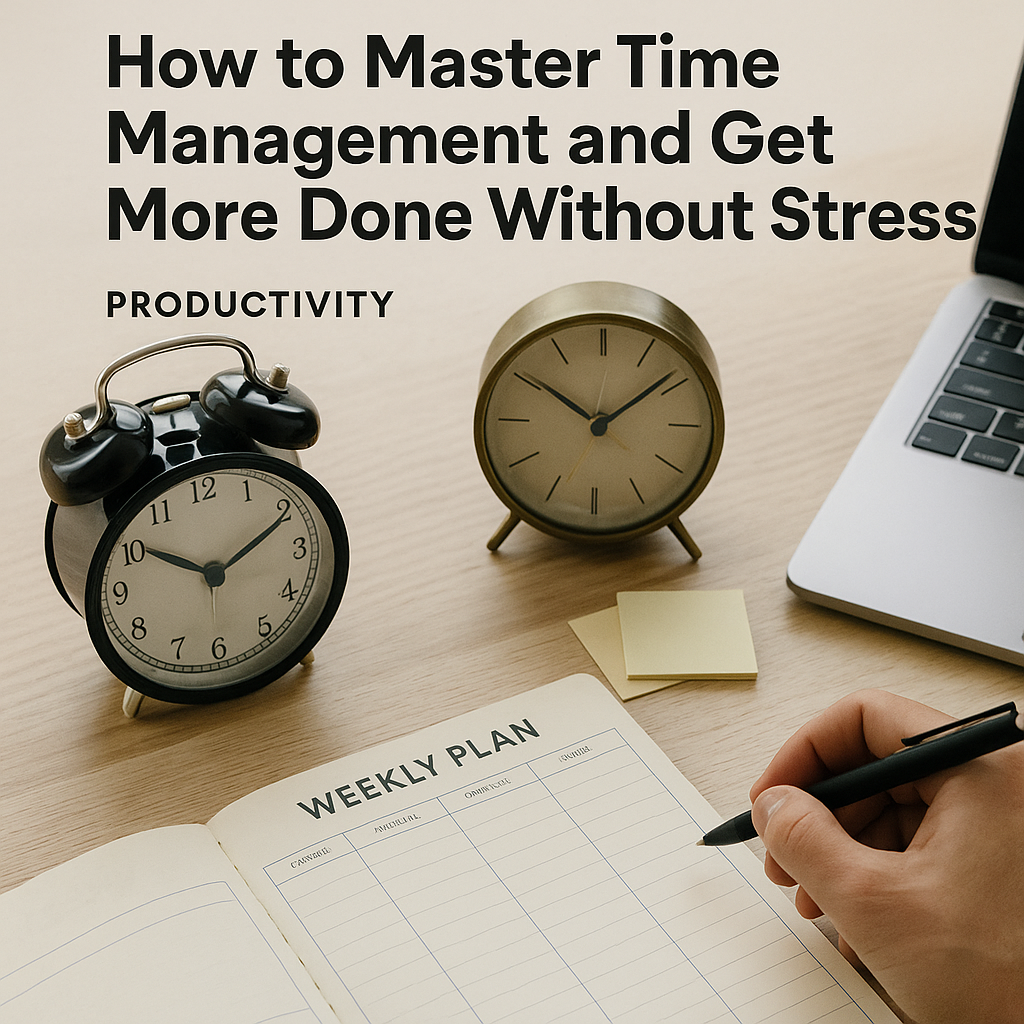Time is your most limited resource. You can’t create more of it—but you can manage it better. With intentional time management, you can increase productivity, reduce stress, and create space for the things that matter most.
In this article, you’ll learn practical strategies to organize your day, set better priorities, and finally feel in control of your schedule.
Why Time Management Is Really Energy Management
Managing your time isn’t just about squeezing in more tasks. It’s about:
- Aligning your time with your values
- Matching tasks to your energy levels
- Reducing decision fatigue
- Creating systems instead of chaos
When you manage time well, you reduce overwhelm and increase fulfillment.
1. Know Where Your Time Is Going
You can’t fix what you don’t track.
Spend 1–3 days logging your activities in 30-minute blocks. Use a simple notebook, spreadsheet, or time tracking app (like Toggl or Clockify).
You’ll discover:
- Hidden time-wasters
- Unintentional multitasking
- Energy-draining patterns
- Gaps for better focus or rest
Awareness is step one.
2. Use the Eisenhower Matrix to Prioritize
Not all tasks are created equal.
Sort them into four categories:
| Urgent | Not Urgent |
|---|---|
| Important | Do it now |
| Not Important | Delegate it |
Spend most of your time on important but not urgent tasks—like planning, learning, and health. These build long-term success.
3. Plan Your Day the Night Before
Start each day with clarity. Before bed or at the end of work, write:
- 1–3 high-priority tasks
- Any appointments or meetings
- One thing you’re looking forward to
- A rough time block for each task
This reduces morning decision fatigue and sets you up to win.
4. Try Time Blocking
Instead of working from a to-do list all day, assign specific tasks to time slots.
Example:
- 8:00–9:30 AM → Deep work (writing, strategy)
- 9:30–10:00 AM → Email replies
- 10:00–10:15 AM → Break
- 10:15–11:00 AM → Team calls
- 11:00–12:00 PM → Project work
Time blocking increases focus and eliminates “what should I do next?” moments.
5. Group Similar Tasks (Batching)
Switching between tasks kills productivity. Instead, group related activities together:
- Respond to all emails in one batch
- Do all errands in one trip
- Record multiple videos or posts in one session
Batching saves time and mental energy.
6. Use the 2-Minute Rule
If a task takes less than 2 minutes, do it immediately.
This clears clutter from your list and prevents small tasks from piling up.
Examples:
- Respond to a quick message
- File a document
- Throw laundry in the machine
- Book an appointment
Quick wins build momentum.
7. Schedule Breaks and Recovery Time
You’re not a machine. Working without breaks leads to decision fatigue, burnout, and lower output.
Try:
- The Pomodoro technique (25 mins work, 5 mins rest)
- Short walks between tasks
- Mindful breathing during lunch
- A hard stop at the end of the workday
Breaks restore your focus.
Final Thought: Make Time for What Truly Matters
Time management isn’t about doing more. It’s about doing what matters—on purpose.
Create space for your highest goals. Protect your focus. Be kind with your energy. The more intentional you are with your time, the more fulfilling your days become.

